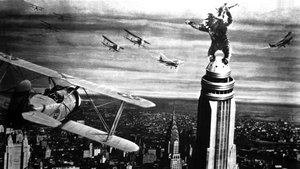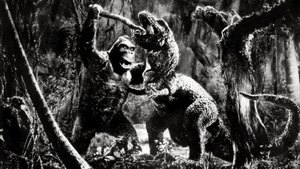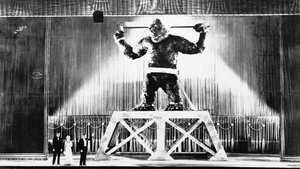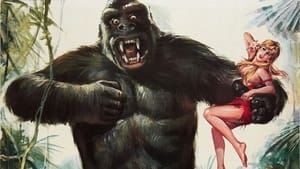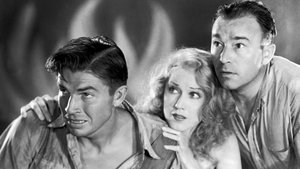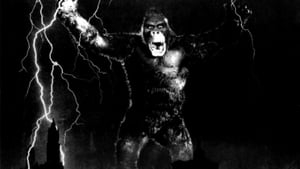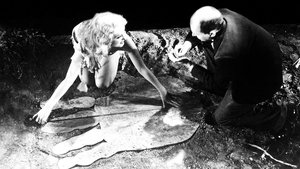Contact: [email protected]
Video Sources 0 Views

Synopsis
[ez-toc]





Introduction
In the vast tapestry of cinema history, certain films stand as timeless testaments to the art of storytelling and the magic of moviemaking. One such gem is “King Kong Colorized” (1933), an iconic piece that has enthralled audiences for nearly nine decades. Now, imagine taking this black and white classic and infusing it with the vivid hues of color, ushering it into a new era of visual appeal. In this article, we embark on an exploration of the controversial colorized version of “King Kong Colorized” (1933), delving into its impact on the viewing experience and navigating the ongoing debate surrounding the colorization of old movies.
Keywords: King Kong Colorized 1933, Colorized Movies, Old Movies, Old Films
Read Media File Transfer Agreement: Terms and Conditions
Read FAQ
The Making of a Monstrous Masterpiece
“King Kong Colorized” (1933) is a cinematic marvel that has etched its place in history as a pioneer of special effects and stop-motion animation. Directed by Merian C. Cooper and Ernest B. Schoedsack, the film takes us on a thrilling journey from the mysterious Skull Island to the bustling streets of New York City. At the heart of the film is the colossal ape, King Kong, brought to life through the revolutionary stop-motion animation techniques of Willis O’Brien.
The film’s legacy lies not only in its groundbreaking animation but also in the atmospheric and memorable scenes set in Skull Island and the chaotic streets of New York. Fay Wray’s portrayal of Ann Darrow, the damsel in distress, adds a layer of humanity to the colossal spectacle. These elements have solidified “King Kong” as a timeless classic, a testament to the ingenuity of early cinema.
Keywords: King Kong, Willis O’Brien, Skull Island, New York City, Fay Wray, stop-motion animation techniques
From Black and White to Color: The Controversy of Colorizing “King Kong Colorized”
In 1989, a pivotal decision was made to colorize “King Kong Colorized,” sparking a fierce debate in the film community. Colorization, the process of adding color to black and white films, raised questions about artistic integrity and historical authenticity. The allure of bringing an old film into the colorful palette of modern cinema clashed with the purists who argued that altering the original artistic intent was sacrilegious.
The colorization of “King Kong Colorized” (1933) was driven by a desire to make classic films more accessible to contemporary audiences. The technology used in this process aimed to enhance the viewing experience, yet it triggered a passionate discourse on whether such modifications compromised the integrity of the original work.
Keywords: King Kong colorization controversy
The Impact on Visuals and Atmosphere
Colorization, while introducing a new layer of visual appeal, brings with it a set of challenges. The film’s original black and white presentation allowed shadows and contrasts to play a pivotal role in creating a mysterious and foreboding atmosphere. The addition of color may alter the intended emotional impact of certain scenes and compromise the primal nature of the beast-versus-man narrative.
Conversely, colorization can breathe new life into the visuals, providing a fresh perspective on the film’s grandeur. Certain scenes, such as the iconic confrontation between King Kong and the biplanes atop the Empire State Building, may benefit from the vibrancy that color brings. The debate over whether colorization enhances or detracts from the overall viewing experience rages on, with opinions as diverse as the hues themselves.
Keywords: animation techniques, special effects discussion
Preserving the Original: Appreciating “King Kong Colorized” in Black and White
Amidst the controversy, there is a strong case to be made for preserving the original black and white version of “King Kong Colorized” (1933). The film is a product of its time, a masterpiece influenced by the era of classic Hollywood filmmaking and the tumultuous backdrop of the Great Depression. The black and white format captures the essence of the film’s historical context, allowing audiences to appreciate the artistry of early cinema.
“King Kong” (1933) is not merely a monster movie; it is an adventure that reflects the primal struggle between man and beast. The black and white presentation enhances the stark contrasts and shadows, contributing to the film’s timeless allure. Watching it in its original form is like stepping into a time machine, immersing oneself in the magic of a bygone era.
Keywords: 1933 film, monster movie, adventure, primal man vs. beast
The Debate Continues: Balancing Preservation with Accessibility
The dilemma faced by archivists and filmmakers in balancing preservation with accessibility is not unique to “King Kong Colorized.” In the case of RKO Pictures’ classic, the challenge persists as we witness the revival of iconic monsters in modern cinematic universes. Merian C. Cooper’s creation has seen a resurgence in the MonsterVerse, with “Godzilla vs. Kong” (2021) reigniting the colossal clash between titans.
As we celebrate the continuation of these legendary tales, it becomes evident that finding the delicate equilibrium between preserving the integrity of old movies and introducing them to new audiences is an ongoing challenge. The question remains: How can we ensure that the cinematic gems of yesteryears remain untouched while still catering to the evolving tastes of contemporary viewers?
Keywords: Merian C. Cooper, RKO Pictures, MonsterVerse, Godzilla vs. Kong
Embracing Both Versions: A Personal Perspective
Having had the privilege of experiencing both the colorized and original black and white versions of “King Kong” (1933), it’s clear that each iteration offers a unique cinematic journey. The colorized version injects a modern vibrancy into the film, inviting audiences to appreciate the visual grandeur in a way that aligns with contemporary expectations. However, the original black and white version holds a special place in the heart, allowing for a deeper connection with the historical context and the nuances of early filmmaking.
As a film reviewer and editor, I encourage readers to approach colorized movies with an open mind. While the debate surrounding colorization is valid, it is essential to appreciate the interpretive possibilities that each version brings. Whether you prefer the timeless charm of black and white or the vivid spectacle of color, both renditions of “King Kong” (1933) contribute to the rich tapestry of cinematic history.
Keywords: King Kong Colorized 1933, movie review
Conclusion
In the annals of old movies and classic cinema, “King Kong” (1933) stands tall as a cultural landmark, a testament to the ingenuity of its creators and the enduring appeal of monster movies. The debate over the colorization of this iconic film continues to spark discussions about artistic integrity, historical preservation, and the ever-evolving nature of cinema.
As we navigate the tension between preserving the original and embracing modern technology, “King Kong Colorized 1933” serves as a symbol of the ongoing dialogue within the film community. Regardless of where one stands on the colorization debate, there is no denying the film’s significance as both an old movie and a timeless piece of cinematic artistry. As we celebrate the legacy of “King Kong,” let us continue to appreciate the magic it brought to the silver screen, both in black and white and vibrant color.
